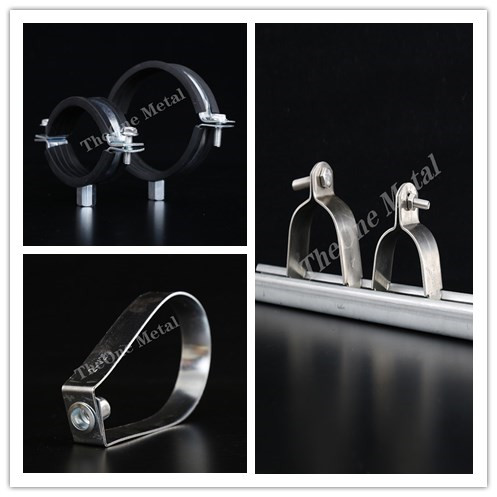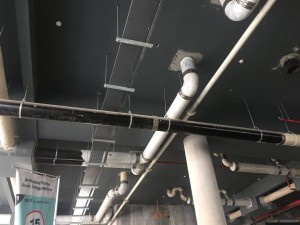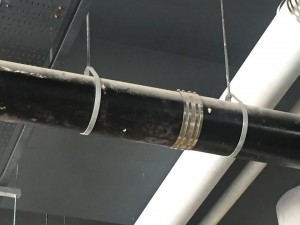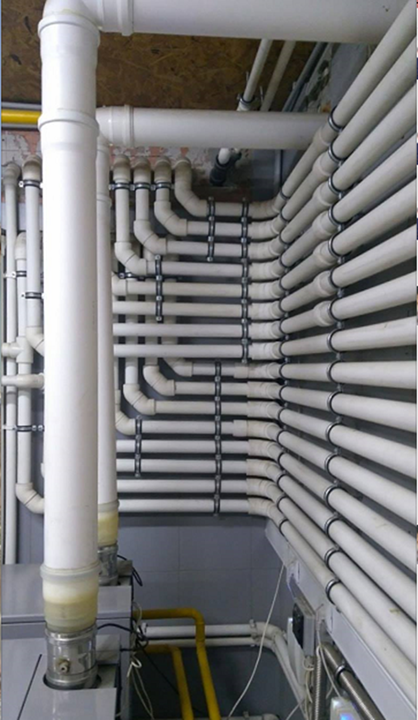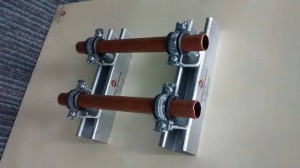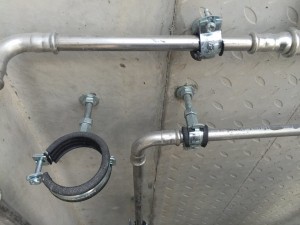There are many kinds of hose clamp in our life. And there is one type of pipe clamp —hanger clamp, which is most used in construction. Then do you know how this clamp work?
Many times pipes and related plumbing have to go through cavities, ceiling areas, basement walkways, and similar. To keep the lines out of the way where people or things would be moved but to still run the plumbing through the area they have to be helped up high on the walls or suspended from the ceiling.
This is done with an assembly of rods attached to the ceiling on one end and clamps on the other. Otherwise, the pipes are secured by clamps to the walls to keep them in position high up. However, not any simple clamp will work. Some have to be able to hand temperature. Every clamp needs to be secure to avoid wiggle in the pipeline. And they need to be able to address expansion changes in pipe metal that can make the diameter bigger or smaller with cold or heat.
The simplicity of the pipe clamp hides how important a function it serves. By keeping a plumbing line in place, the equipment helps ensure the liquids or gases moving inside stay where they belong and arrived at their intended destinations. If a pipe were to come loose, the fluids inside would immediately spill into the immediate area or the gases would contaminate the air in a similar fashion. With volatile gases, it could even result in fires or explosions. So clamps serve a vital purpose, no argument.
The most basic design in pipe clamps is the standard version which involves two parts held together by screws. The clamp is split into two equal parts that surround half of a pipe. The parts are connected together by sandwiching the pipeline in the middle and secured by screws that hold the clamps together tightly.
The most basic of standard clamps are bare metal; the inside surface sits right against the pipe skin. There are also insulated versions. These types of clamps have rubber or material lined on the inside which provides a type of cushion between the clamp and the pipe skin. The insulation also allows for extreme expansion changes where the temperature is a big issue.
Post time: Jan-13-2022

 Whatsapp:+86 15222867341
Whatsapp:+86 15222867341 